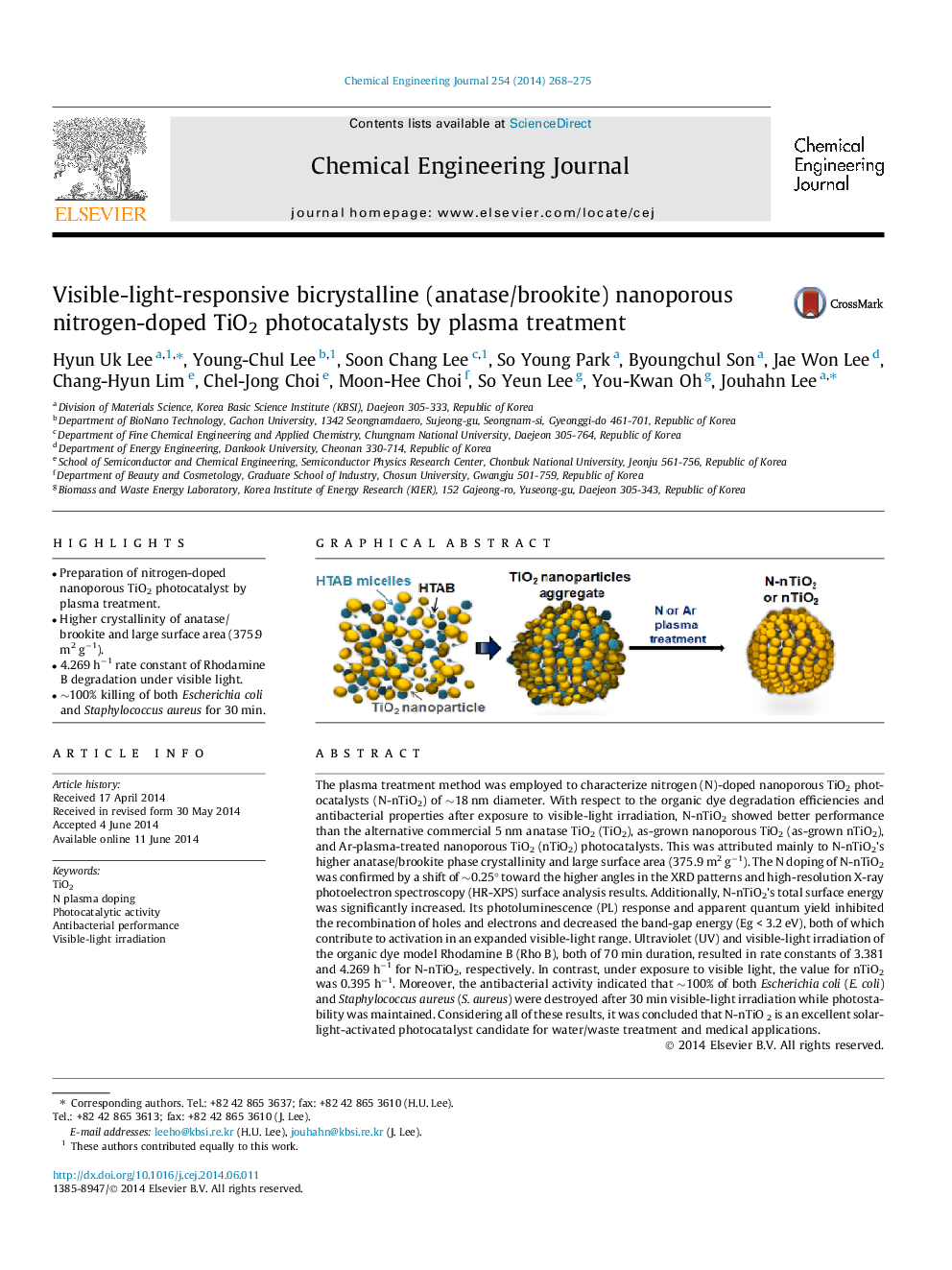| Article ID | Journal | Published Year | Pages | File Type |
|---|---|---|---|---|
| 147256 | Chemical Engineering Journal | 2014 | 8 Pages |
•Preparation of nitrogen-doped nanoporous TiO2 photocatalyst by plasma treatment.•Higher crystallinity of anatase/brookite and large surface area (375.9 m2 g−1).•4.269 h−1 rate constant of Rhodamine B degradation under visible light.•∼100% killing of both Escherichia coli and Staphylococcus aureus for 30 min.
The plasma treatment method was employed to characterize nitrogen (N)-doped nanoporous TiO2 photocatalysts (N-nTiO2) of ∼18 nm diameter. With respect to the organic dye degradation efficiencies and antibacterial properties after exposure to visible-light irradiation, N-nTiO2 showed better performance than the alternative commercial 5 nm anatase TiO2 (TiO2), as-grown nanoporous TiO2 (as-grown nTiO2), and Ar-plasma-treated nanoporous TiO2 (nTiO2) photocatalysts. This was attributed mainly to N-nTiO2’s higher anatase/brookite phase crystallinity and large surface area (375.9 m2 g−1). The N doping of N-nTiO2 was confirmed by a shift of ∼0.25° toward the higher angles in the XRD patterns and high-resolution X-ray photoelectron spectroscopy (HR-XPS) surface analysis results. Additionally, N-nTiO2’s total surface energy was significantly increased. Its photoluminescence (PL) response and apparent quantum yield inhibited the recombination of holes and electrons and decreased the band-gap energy (Eg < 3.2 eV), both of which contribute to activation in an expanded visible-light range. Ultraviolet (UV) and visible-light irradiation of the organic dye model Rhodamine B (Rho B), both of 70 min duration, resulted in rate constants of 3.381 and 4.269 h−1 for N-nTiO2, respectively. In contrast, under exposure to visible light, the value for nTiO2 was 0.395 h−1. Moreover, the antibacterial activity indicated that ∼100% of both Escherichia coli (E. coli) and Staphylococcus aureus (S. aureus) were destroyed after 30 min visible-light irradiation while photostability was maintained. Considering all of these results, it was concluded that N-nTiO 2 is an excellent solar-light-activated photocatalyst candidate for water/waste treatment and medical applications.
Graphical abstractFigure optionsDownload full-size imageDownload as PowerPoint slide
